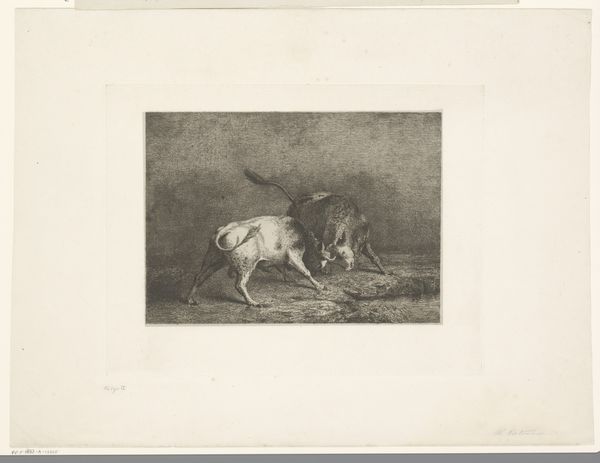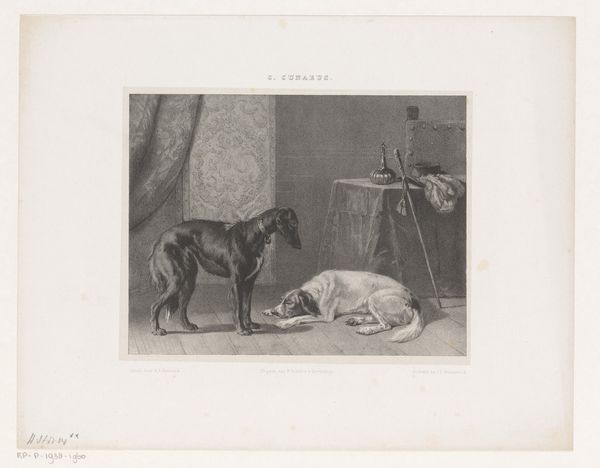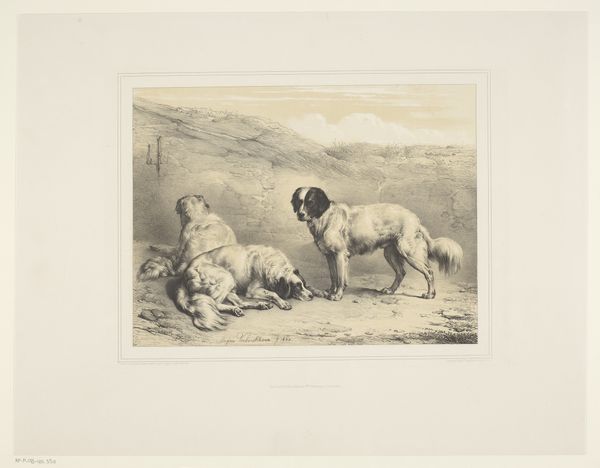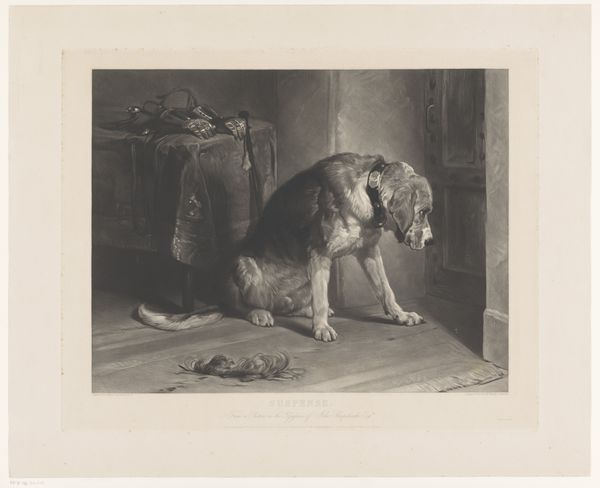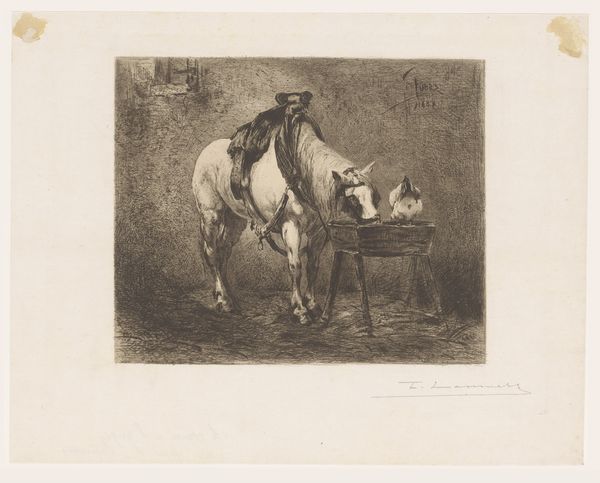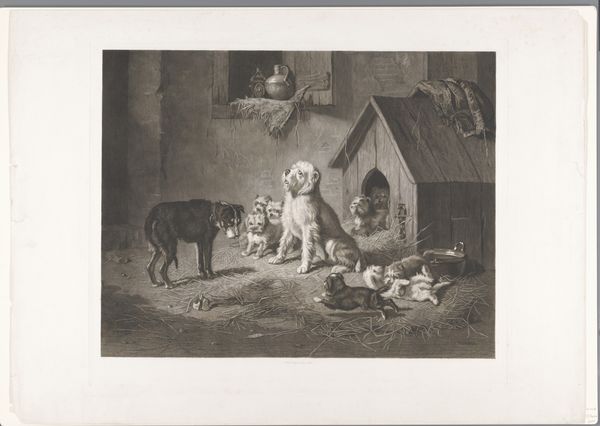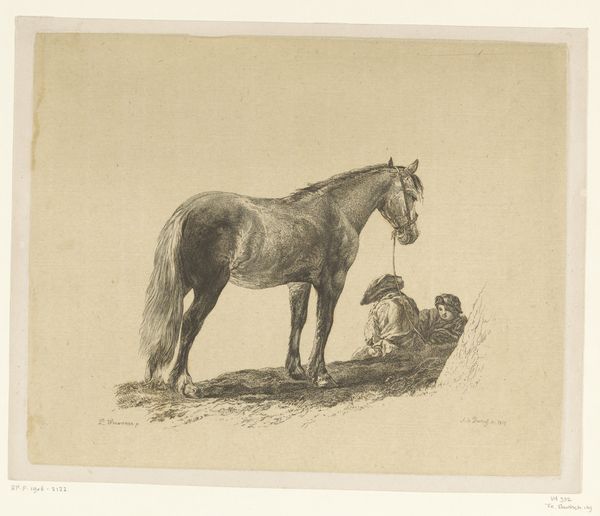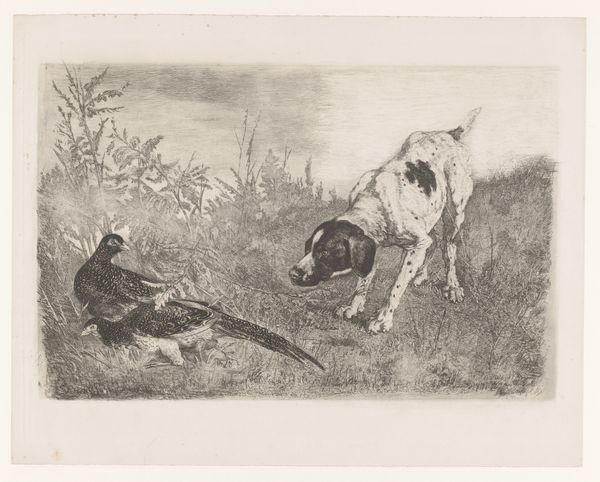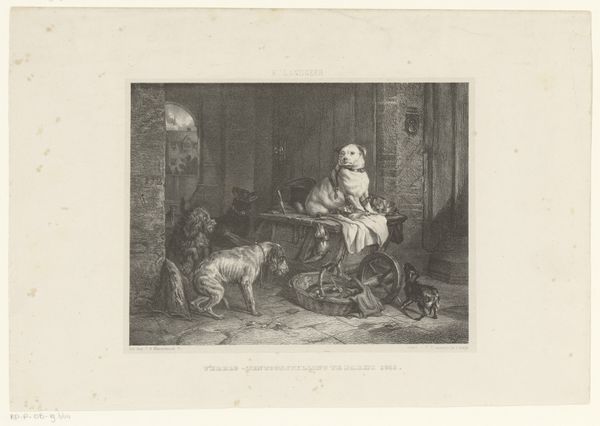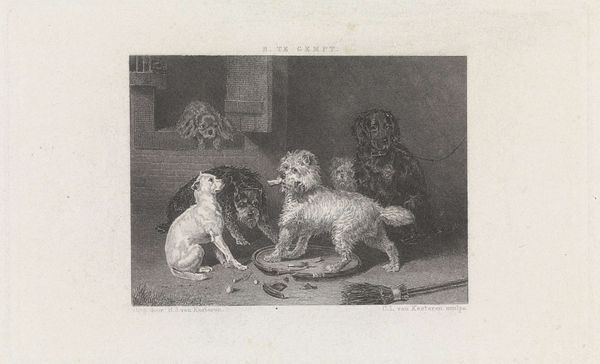
drawing, print, engraving
#
drawing
#
animal
# print
#
dog
#
genre-painting
#
engraving
#
realism
Dimensions: height 262 mm, width 332 mm
Copyright: Rijks Museum: Open Domain
Curator: Here we have Anthonie van Volkom’s “Drie honden,” or "Three Dogs" in English. It's an engraving dating from somewhere between 1847 and 1865, currently residing here at the Rijksmuseum. Editor: My first thought is, the hierarchy is palpable! Even without knowing the specifics, the body language screams of status and domestic dynamics. Curator: Exactly! And thinking about the moment in which Van Volkom created this, we must consider Victorian society's fascination with class distinctions, subtly portrayed, perhaps, through canine allegory. Dogs, then as now, reflected their owners' social standing. What breeds do you see and what do they signify? Editor: The greyhound, sleek and poised, its extended leg appears almost regal, signifying aristocracy, maybe old money. Whereas the smaller spaniels – one dark, one parti-colored, flank its position – suggest perhaps rising merchant classes, eager to mimic the aesthetic but never quite reaching that effortless nobility. The food dish creates a shared stage. But even so, no equal status. Curator: Precisely! And consider the era – the rise of industrialization brought shifts in social mobility, anxieties that ripple through even seemingly innocent genre scenes like this. Also notice the interiors... A large drape, a chair, are they markers of privilege and who has access to this privileged space and why? Editor: It's curious how even the textures amplify these readings – the smoothness of the greyhound contrasting with the soft, feathery coats of the spaniels. Each touch communicates a level of pampering, a visual signifier. I would note too how we viewers are invited in. We share the same plane as these canines. Curator: It also raises complex ideas around species and human relationships to labor and status in a changing political landscape. How notions of breeds themselves reflect the social construction of class and privilege is hard to ignore when encountering "Drie Honden." Editor: This piece encourages a multilayered consideration about power and identity through subtle visual clues, prompting questions about belonging. The fact it is monochromatic, it forces you to reflect upon composition, too. Curator: I think you’ve provided us with a thought-provoking lens through which to view Volkom's artwork, unveiling not only artistic skill but deeper insights into the era's intricate social dynamics. Editor: Likewise, you’ve given me a lot to mull over regarding the power of symbology within visual culture of that period – thank you.
Comments
No comments
Be the first to comment and join the conversation on the ultimate creative platform.

